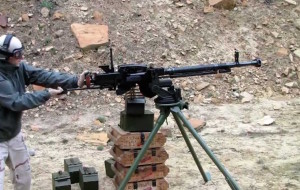A Culpable Silence: No explanation of “sources” from U.S. Embassy for its July 5, 2015 report, charging the SPLA/North with an atrocity crime near Talodi, South Kordofan
Eric Reeves | August 17, 2015
Two weeks ago I wrote about the implications of a significant statement by the U.S. Embassy in Khartoum—unprecedented to my knowledge—accusing the Sudan People’s Liberation Army/North (SPLA/N) of a serious atrocity crime near Talodi, South Kordofan. I argued at length about the implausibility of such a crime, particularly in light of the character of then commander of the SPLA/N, Abdel Aziz al-Hilu; I argued further that the that the ulterior motive for the statement was to provide “balance” in what the U.S. has said about the atrocity crimes of Khartoum’s regular army and air force (the Sudan Armed Forces), as well as its allied militia forces, on the one hand, and what is has said about the SPLA/N on the other.
To date there has been no response from the Embassy or the U.S. State Department concerning my allegations that the press statement was another step in the process of rapprochement between Khartoum and Washington; nor have I received any response to my queries.
But the issues at stake here are too serious to allow Obama administration silence to carry the day. I have continued with research that the U.S. Embassy in Khartoum clearly did not undertake in declaring:
“We note with grave concern reports that on June 25 [2015] the Sudan People’s Liberation Movement-North (SPLM-N) attacked against civilians in gold mining areas near the town of Talodi, in Southern Kordofan state,” said the embassy in a statement extended to Sudan Tribune on Sunday.
“The targeting of civilians is a violation of international humanitarian law.”
“We urge the SPLM-N, all other armed groups, and the Government of Sudan to cease hostilities, to respect their obligations under international humanitarian law, in particular with regard to the protection of civilians, and to ensure safe, timely, and unhindered access for aid organizations,” said the embassy. (Sudan Tribune, July 5, 2015)
In response to my queries from senior staff and commanders in the SPLA/N I have received emphatic denials that any such event as described by the Embassy occurred on June 26, 2015. Here is a summary collating the relevant SPLA/N accounts, consistent among the responses of all SPLA/N senior staff:
On June 26, 2015, the date in question, an SPLA/N reconnaissance team noticed that two Land Cruisers mounted with Doshka heavy (12.7mm) machine-gun had begun daily trips to a hill called Jabel Tugulla. Jabel Tugulla lies in a “no man’s land” between Talodi and Kauda (the unofficial “capital” of the Nuba Mountains). The SPLA/N initiated an attack on the machine-gun mounted Doskas, knowing that no civilians owned such vehicles. The Land Cruisers fled, but subsequently Sudan Armed Forces (SAF) infantry troops engaged in a firefight with the SPLA and took serious casualties, abandoning the bodies of dead and dying.
A Doshka heavy (12.7mm) machine gun—when truck mounted, it is an extremely dangerous weapon. Khartoum has armed its own forces and allied militia forces with these weapons in Darfur, South Kordofan, and Blue Nile. Many have been captured by rebel groups.
The local SPLA commander speculates that the SAF was either seeking to establish a base closer to Kauda or engaging in reconnaissance in anticipation of an offensive assault on SPLA/N positions in the area.
According to all SPLA/N sources with whom I have communicated (through a highly trusted intermediary), there were simply no civilians or civilian settlements in the area characterized by the U.S. Embassy:
“We note with grave concern reports [plural—ER] that on June 25 [2015] the Sudan People’s Liberation Movement-North (SPLM-N) attacked against civilians in gold mining areas near the town of Talodi, in Southern Kordofan state.”
So the obligation is fully upon the U.S. Embassy to answer a series of questions:
- Why was the leadership of the SPLA/N not contacted before the statement was issued?
Given the record of reliability on the part of the SPLA/N, and Abdel Aziz al-Hilu in particular, this seems a perverse omission. Communication with the leadership of the SPLA/N makes clear their view of events was not sought.
- What are the source(s) for the “reports” the U.S. Embassy cites? And if names can’t be provided, what characterization of the sources can be offered?
- Are any of the sources for the “reports” referred to not part of the Khartoum regime? And if not, why would the Embassy credit the regime’s account? Khartoum’s record of mendacity has few rivals in the world today, and the accounts offered by military spokesmen often contradict facts confirmed by UN peacekeepers and military observers, as well as civilians, journalists, and news reporters.
There are no humanitarian relief organizations in this area of South Kordofan; there are no human rights reporters; there is no UN presence. Who other than the Khartoum regime could have been responsible for reports?
We return perforce to the question of motive, and to the oddity of this singular, un-sourced press release by the U.S. Embassy in Khartoum. Answers are unlikely to be forthcoming—which is of course an implicit answer in itself.
—
Eric Reeves
Smith College
Northampton, MA 01063
413-585-3326
ereeves@smith.edu
Skype: ReevesSudan
Website: www.sudanreeves.org
Compromising With Evil: An archival history of greater Sudan, 2007-2012 www.CompromisingWithEvil.org
